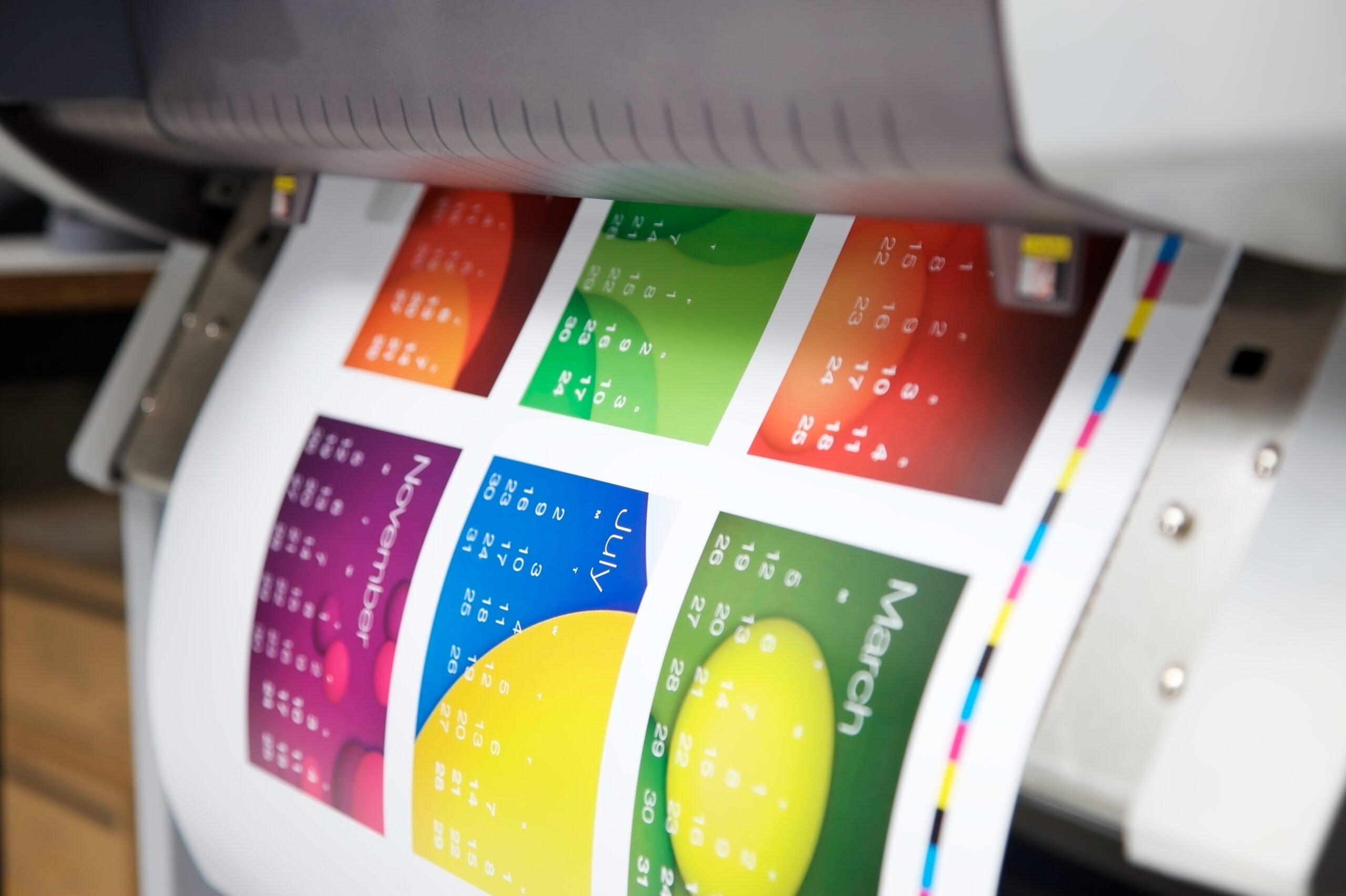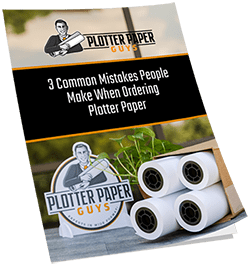When printing photos, for the best quality you need to use paper designed specifically for that purpose. In addition to using large format photo paper, the type of printer and ink is important to produce a quality photographic image.
The largest roll of photo paper available is 60 inches wide and the smallest is 24 inches wide. For large format printing, the printer must be able to accommodate large format photo paper. This is used for items such as posters, maps and charts, trade show wall panels, banners, blueprints, and store displays.
What Type of Photo Paper Do Professionals Use?
There is a wide range of photo finishes. The one often chosen by professional photographers is pearl finish. This type of paper has a slightly glossier look than satin finish paper. The pearl finish provides vibrant color with a lower reflection rate than gloss.
Wedding photographers often use lustre finish paper, which has a slight gloss and pearl-like texture. This finish falls between glossy and matte, providing a classy look for these special portraits.
Inkjet v Laser Photo Paper
The professional printing industry prefers inkjet printer technology. Laser printers print at a faster rate of speed, but they do not produce the same high-quality photograph that an inkjet printer does.
This is because a laser printer uses a substance that resembled melted powder in CMYK (cyan, magenta, yellow, key/black) colors. Inkjet printers use the same colors, but the color is supplied in a liquid form. The inkjet printer delivers the ink to the paper by small jets, achieving 2,880 dpi of ink versus the 720 dpi of a laser printer.
DPI refers to dots per inch. The number of DPI determines the resolution when printing. The higher the DPI the more detail that shows in the photograph.
Be aware that DPI is not dots per square inch. Because the printing is both horizontal and vertical, when printing at 600 DPI the printer is actually printing 360,000 (600 x 600) dots on every square inch of paper.
What Is the Thickest Photo Paper?
When referring to paper thickness, you are giving consideration to its weight. Grams per square meter (GSM) is the method by which the paper weight is determined. To obtain the weight different types of paper are cut into one square meter for measuring.
A higher GSM means the paper is thicker, but that does not mean it is a quality product. When printing professionally you want a higher GSM for products such as greeting cards. To reduce costs, brochures and other items not likely to be kept are printed on low GSM paper.
Which Paper Is Best For Photo Printing?
If you are printing photographs that will be handled frequently, matte is the better choice because it does not absorb fingerprints. The reason for this is because matte finishes refract light. By having a fingerprint-free photograph you do sacrifice color vibrancy.
Paper comes in a variety of sizes and finishes. A professional photographer will make a determination on paper based on the size and planned use of the finished product.
The most common photo paper sizes are 4” x 6” and 5” x 7″. These sizes fit inside standard photo albums and you can easily print them at home. Paper for this purpose is reasonably priced for printing at home.
If you want to use your photos for a desk or wall frame, A4 and A5 size paper are ideal. These will allow you to print a larger display picture but the size is small enough to use a standard home photo printer.
For printing larger photographs you will need a printer that can handle large format paper sheets or rolls. For example, the A3 size of 11.7” x 16.5” is popular when printing large images, calendars, and posters.
Printing panoramic photos in 6” x 12” or 24” x 48,” popular sizes for landscape and travel photos, requires panoramic size paper. Square photo sizes are also popular with sizes ranging from 5” x 5” to 30” x 30.”
The most popular sizes are easily available and affordable. There are a wide variety of paper sizes available, including custom paper sizes from large format paper suppliers.
What Size Is HP Photo Paper?
HP Advanced photo paper provides vibrant color in photographs. This mid-weight paper dries quickly and has some water resistance. The paper is available in sizes ranging from 4 x 6 inches to 13 x 19 inches. You may purchase it in either gloss or soft-gloss finish.
To obtain the deepest blacks and most vibrant colors, you will need to print using original HP ink. The paper is optimized for use in several HP photo printers. If you are planning to print anything larger than 14 x 20 inches, you will need large format paper and a large format printer.
How To Enlarge a Picture To Print Wide Format
When you are printing an image using high-quality wide format paper you need to resize the image:
In Photoshop, go to file, open and select a photograph
Using the tool ribbon, go to “Image” and from the drop-down select “Image Size”
A pop-up window will appear for entering the new dimensions, resolution, and size
If your photo was a 5 x 7 and you want to enlarge it to 11 x 16, you enter those sizes in the width and height boxes
Click boxes to scale sizes, constrain proportions and resample the image
Select the resampling method: Bicubic—precise, calculates the average of surrounding pixels, works best for smooth gradients. Bicubic Smoother—this works best on enlargements
Click okay when all changes are entered
The image is now re-sized to the new dimensions you entered.
Understanding Photo Paper Finish
When you find yourself trying to select large format photo paper sizes to purchase you will also need to pick the paper finish.
Glossy Finish is available in different degrees of glossiness from normal to high glossy. This paper is very good when you want sharp detail in the photograph you print.
The high shine makes even small details prevalent. Be aware that the glare from the high gloss finish can make viewing the print difficult at times.
Matt or Matte Finish has no glossiness to it and is less expensive. Because of its lower cost, this is often the paper of choice for brochures and flyers. It is also popular for printing black and white photographs.
Satin Finish contains the benefits of both matte and glossy paper. It has a soft sheen to it without being a high shiny gloss. Some brands refer to this paper as semi-gloss rather than satin.
Luster and Pearl are more often found in papers made by higher-level manufacturers. The paper has a satin texture and finish. While a standard semi-gloss or satin is flat, the luster and pearl papers have a slight texture that gives the photo a classy, specialized look.
Best Photo Printers for 2021
If you want to print professional-quality prints at home, your home office equipment needs to include the best photo printer. The Epson SureColor P700 inkjet printer can print any media up to 13” wide and uses the new UltraChrome PRO10 ink for vibrant, rich color.
For professional media handling the printer holds two rolls of paper and sheet media up to 1.5mm thick. Prints from this machine have a lifespan of up to 200 years in color and 400 years in black and white. One unique feature of this printer is a see-through panel and interior light that lets you watch your print being made.
If you are more budget-conscious, the Canon Pixma Pro-200 produces a vibrant print but is not as color accurate as the Epson SureColor P700. The machine is easy to operate and uses dye-based inks that are not as expensive as those used in the Epson printer. This means the print may not last as long.
If you are planning to print your own large-format photographs, the Epson SureColor P900 17” Photo Printer is an ideal choice. This printer uses large format inkjet paper in either cut sheets or paper rolls up to 17” wide. Whether setting up your photography studio or home office, this printer needs to be on your office products list.
You are able to print borderless panoramas and banners up to 17” wide. The machine holds large format paper up to 17” x 22” and uses UltraChrome PRO10 pigment inks to produce vibrant color prints or black and white images. With the ability to print banners and panoramas that measure as large as 10 feet 9 inches long on roll media, this is a printer you will definitely want to check out.
The Advantage of Prints Over Digital Files
In the digital era, many people fail to print the photographs they take. They are also more likely to request a digital file from a photographer rather than prints. However, printing photos has some advantages.
You can enjoy your photos if they are printed and on display
People usually view photos on their phones, which have tiny screens
Prints are something you can physically hold and touch, making the experience more personal
You have a physical print in case your hard drive breaks or is inadvertently formatted.
While everyone can print photos from home, you will not achieve a high-quality product without the proper equipment and paper. That is why purchasing the proper type of paper is important.
Purchasing Large Format Photo Paper
Now that you know everything there is about printing photographs, the types of paper, and what professionals prefer, you are probably itching to print your own professional quality large-format photographs.
When ordering large format photo paper, or paper for any other product, it is easy to obtain what you need at Plotter Paper Guys. We provide a wide range of specialty papers for inkjet media, engineering media, display graphics, blueline diazo, and prefold paper.
Please contact us at 888-771-3230 if you have any questions. We also invite you to visit our FAQ page for information on shipping and obtaining product samples.




